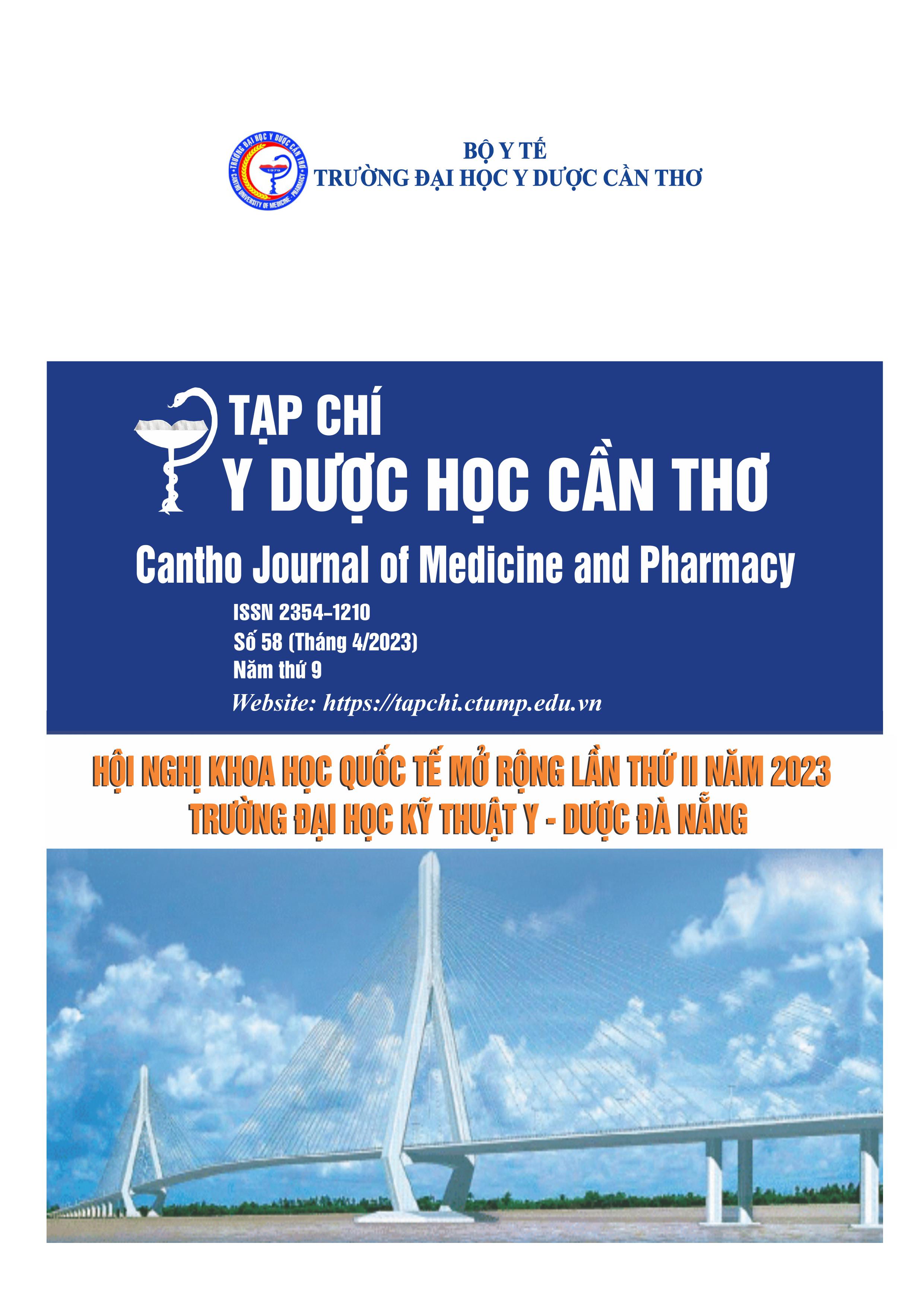RISH FACTORS FOR BRONCHOPULMONARY DYSPLASIA IN VERY PRETERM INFANTS
Main Article Content
Abstract
Background: Bronchopulmonary dysplasia is a common complication in very preterm infants. Objectives: To determine risk factors of bronchopulmonary dysplasia in very preterm infants. Materials and method: This is a cross-sectional study on 170 newborns less than 32 gestational age, admitted to the neonatal unit at Da Nang Hospital for Women and Children from 01/02/2019 to 31/1/2020. Maternal history, demographic features, and morbidities of newborns during hospitalization was collected. Multivariate regression was used to determine independent risk factors for bronchopulmonary dysplasia. Results: 54/170 infants (31.8%) had BPD. Gestational age less than 28 weeks (OR 7.85; 95% CI 3.50-17.75), birth weight less than 1000g (OR 5.17; 95% CI 2.37-11.31), normal vaginal delivery (OR 2.99; 95% CI 1.31-7.31), severe anemia (OR 33.14; 95% CI 7.92-288.97), sepsis (OR 51.20; 95% CI 8.08-2095.04), intraventricular haemorrhage (OR 4.03; 95% CI 1.91-8.66), poor weight gain (OR 2.94; 95% CI 1.34-6.76), and patent ductus arteriosus (OR 11.54; 95% CI 5.03-27.24) related to BPD (p<0.05). There was only patent ductus arteriosus as an independent risk factor for bronchopulmonary dysplasia in very preterm infants (OR 3.40; 95%CI 1.32-8.73) (p<0.05). Conclusion: The prevalence of bronchopulmonary dysplasia is high, and patent ductus arteriosus increases the risk of bronchopulmonary dysplasia in very preterm infants.
Article Details
Keywords
Bronchopulmonary dysplasia, very preterm infants, risk factors
References
2. Collins, J.J.P., et al., (2017), The Future of Bronchopulmonary Dysplasia: Emerging Pathophysiological Concepts and Potential New Avenues of Treatment, Front Med (Lausanne), 4, pp. 61.
3. Gortner, L., et al. (2011), Rates of Bronchopulmonary Dysplasia in Very Preterm Neonates in Europe: Results from the MOSAIC Cohort, Neonatology, 2011. 99(2): pp. 112-117.
4. Jiangsu Multicenter Study Collaborative Group for Breastmilk Feeding in Neonatal Intensive Care Units (2019), Clinical characteristics and risk factors of very low birth weight and extremely low birth weight infants with bronchopulmonary dysplasia: multicenter retrospective analysis, Chin J Pediatr, 57(1), pp. 33-39. doi.org/10.3760/cma.j.issn.0578-1310.2019.01.009
5. Kalikkot Thekkeveedu, R., M.C. Guaman, and B. Shivanna (2017), Bronchopulmonary dysplasia: A review of pathogenesis and pathophysiology, Respir Med, 132, pp. 170-177.
6. Kiciński, P., et al., (2017), Bronchopulmonary dysplasia in very and extremely low birth weight infants - analysis of selected risk factors, Pol Merkur Lekarski, 42(248), pp. 71-75.
7. Li, W.L., et al., (2018), Clinical features and prognosis of preterm infants with varying degrees of bronchopulmonary dysplasia, Chin J Pediatr, 20(4), pp. 261-266.
8. Morrow, L.A., et al., (2017), Antenatal Determinants of Bronchopulmonary Dysplasia and Late Respiratory Disease in Preterm Infants, Am J Respir Crit Care Med, 196(3), pp. 364-374.
9. Sucasas Alonso, A., et al., Epidemiology and risk factors for bronchopulmonary dysplasia in preterm infants born at or less than 32 weeks of gestation, An Pediatr (Engl Ed), 2022. 96(3): p. 242-251.
10. Um-Bergström, P., et al., (2017), Lung function development after preterm birth in relation to severity of Bronchopulmonary dysplasia, BMC Pulm Med, 17(1), pp. 97.


